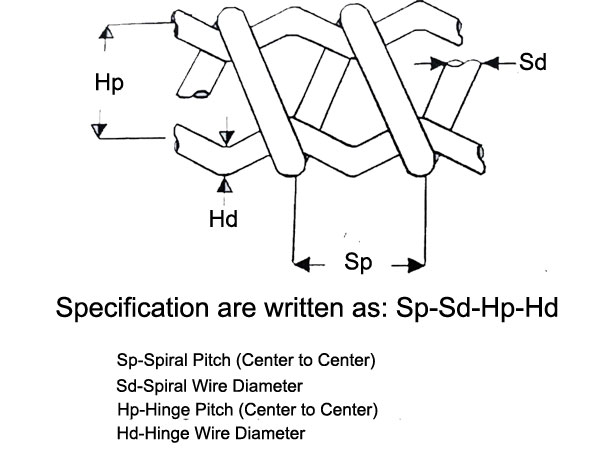- General Details
- Inquiry
|
Conveyor Belts
AMS is have been indulged in the manufacturing of wire mesh conveyor belt since its existence. From our vast and versatile experience, we have covered many industries, the use of which ranges from high temperature to medium and low temperature range belts. We can produce wide range of beltings for manufacturing of different types, covering with the range of conventional belting (CB), Balanced beltings (BB), Double balanced beltings (DBB), Gratex Beltings (GB), Rod Reinforced beltings (RRB), Duplex Beltings (DB), Compound balance Beltings (CBB) to be used in the Industries such as Glass, food, Pharmaceuticals, cement, coal, construction and many other grueling applications where advance engineering been applied for getting better performances and results.
The criteria of selecting conveyor belt is very complicated as far as of material selection is concerned. Environment has great impact on selection of the right material as it prolongs the product life. Other criteria are temperature effects and Mesh selection. All these criteria’s mentioned are inter-related with each other.
|
|
The Nomenclature for ordering a conveyor belt is as follows:
Following are the materials of wire which can be used for manufacturing of conveyor belts at different temperatures.
1. Conventional Beltings (CB): This type of belting is used where low cost is initially desired and where frictionally driven conveyors are suggested. The formation of the belt is the connection of right hand or left hand spirals into the proceeding spiral to form a continuous belt. These belts are also known as sectional belts.
2. Balanced Belt (BB): The formation of balanced belt can be accomplished with the joining of a pre crimp connector wire in between a right and a left hand wound spiral. The primarily objective in creation of this belt is less resistance to creep from either side of the drive pulley which helps in the prevention of localized distortion and destructive stains occurring due to operating stresses. The relatively high tensile strength as compared to other some other types, makes it suitable to use for food processing and glass, ceramics and metal working industries.
3. Double Balanced Belts (DBB): This type of belt has almost similar characteristics as that of balanced belt, however, it consisted of right hand and left hand spirals. The use of crimp wire is where meshes are bigger and straight rods are used where meshes are dense and small. DBB is used more where high temperature applications are required.
4. Gratex Beltings (GB): These types of belts are similar to balanced belts with the difference of spirals, which are closely wound to produce to produce a semi closed mesh. The spirals are fabricated with a close association which is the reason a straight wire been used rather than crimp connector. The dense weave structure of the belt ultimately enhances the strength of the belt while retaining the advantages of the balanced belts.
5. Rod Reinforced Belts (RRB): In Rod reinforced belts the rod is traversed in between the two spirals wire woven together. The shape of the belt is similar to the conventional belting with the major difference of rod insertion. The outstanding feature of this belt is that, with the insertion of rod tensile strength limit increases. The change of its structure from a quadrilateral to triangular makes it more efficient to work at high temperature. The efficiency with this weave of belt at high temperature can be attained by using alloy material. Experiments have shown that 100 percent increase in the strength of conventional belt with the insertion of rod.
6. Duplex Beltings (DB): In the formation of this type of belting, the weaving of pair of spirals is in such a way that each pair turned into preceding pair with the rod been reinforced thru the hinging point. The dense weave increases the weight and ultimately increases the tensile strength. Due to the close mesh this belt is used for carrying small parts.
7. Compound Balanced Beltings (CBB) or Cord Weave): In this kind of beltings, the right and left spirals are fitted to provide a smooth and dense weave. Each spiral is connected with its preceding spiral by three or more straight wire connectors. Due to its dense weave structure, the greater thickness achieved makes the belt work relatively good for the preservation of heat where baking is required. This kind of belting is denser then duplex and works better for the items which are small and unstable.
8. Interlaced Bar Beltings: In this kind of beltings the right and left spirals are fitted to provide a smooth and dense weave. Each spiral is connected with its preceding spiral by three or more straight wire connectors. Good thickness and works relatively good for the preservation of heat where baking is required. More dense then duplex and works better the items which are small and unstable items.
How to order Compound Balance Beltings or Cord Weave(C): 9. Flat Woven Steel Mesh Belt: The alternating spirals are been formed by a flat strip joined thru a straight wire connector to form a rectangular type opening. Good open area of approximately more than 80% and strong frame makes it easy to clean. Due to its strong structure and in particular its border which is clinched or welded, works excellent under heavy loads as it eliminates the effect of belt narrowing mechanically. Materials used for its manufacturing are Galvanized, High Carbon Steel and Stainless Steels grades. Available on order in standard and Heavy duty beltings. In standard beltings, the strip width and thickness are less compared to Heavy duty. The assembling of the vertical bars are by means of cross rod in standard belts, where as for heavy beltings the thickness and width increases and in addition to this, the assembling of the flat bar is by means double cross bars. The borders in both are linked or welded edge.
How to Order:
|





















